This will be the only post this month. Too many distractions. But I do have a backlog of pictures, so next month should be better.
In Lock Down: An Escape
We went out to The Other House in mid-May and the weather was wonderful. Here are some photos from a nice afternoon time on our time there. This panorama is looking down the driveway to the southeast. Click on an image to see the full-sized image.

The light was ever-changing as the clouds moved by.

The rock rose was in bloom.

This panorama takes in most of the property, looking down at the house from the observatory.

The squirrels have built quite a home for themselves.

The tree and rocks on Bunny Hill is a favorite subject of mine.

A red bug makes its way across the driveway.

Finally, the orchard enjoyed the nice rain we had in April.

A Winter Hike in the North Woods
I took a trip to Upper Michigan at the beginning of March and, with the assistance and company of my high school friend Jim, we visited my late parents’ rural home at Conway Lake. Conway Lake is about eight miles from Big Bay, Michigan, and about 35 miles northwest of Marquette, Michigan. The house has always been knows as Camp. For me, this is a proper noun as it is the proper name of a place.
Camp is located on property acquired by my stepfather’s father in the late 1920s (or early 1930s, I am not sure). The land had been recently clear cut so what exists today is a well-kept second-growth maple forest. The land is surrounded by the Huron Mountain Club, an exclusive club formed in the 1890s and that included members like Henry Ford. This makes it even more remote than it already is.
Jim and I headed off in mid-afternoon from Marquette, heading up County Road 550 to Big Bay. Jim lent me a pair of modern-style snowshoes which are really amazing — lightweight and easy to walk in. When we got up to the Conway Lake east road, we were very pleased to see that it had been plowed. From the Huron Mountain Club Road to Camp is about 1.5 miles. That would be hard even in modern snowshoes. It turned out that my parents’ neighbors had plowed the road all the way to their camp so we were able to park the car not far from the driveway to Camp.
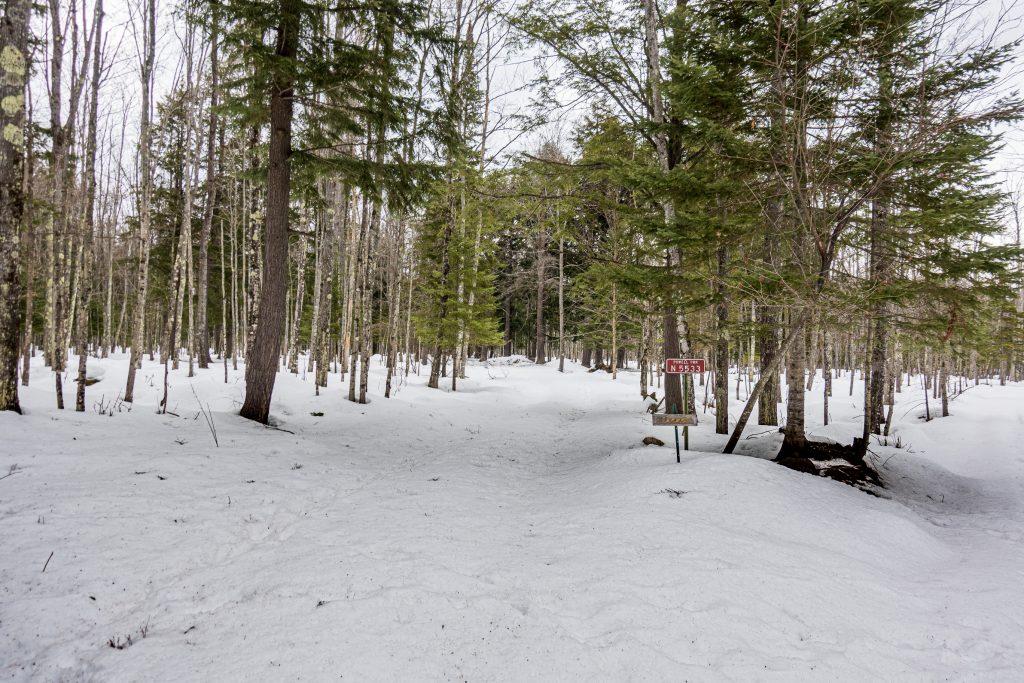
One image processing note: The dehaze function in Lightroom does a great job eliminating the complete washout of snow, allowing you to see the needles and sticks in the snow.
The walking in the snow was not easy. I am not sure we would have made it to Camp where it not for the fortunate plowing that had been done. We walked the couple of hundred yards to Camp and found it in good shape.
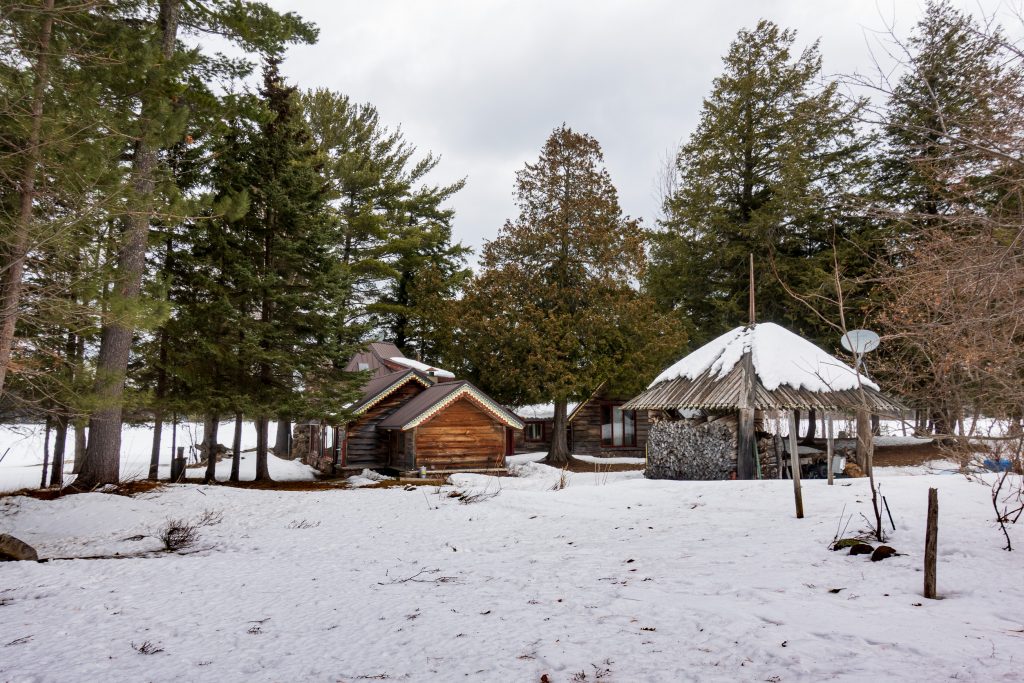
Camp was built bit by bit starting as a one-room hunting camp that my stepfather built after he returned from WWII in the 1940s. The original room is now the kitchen. One of the best decisions he made was to put on a metal roof which will last through many winters and at the steep pitch, sloughs off the snow.
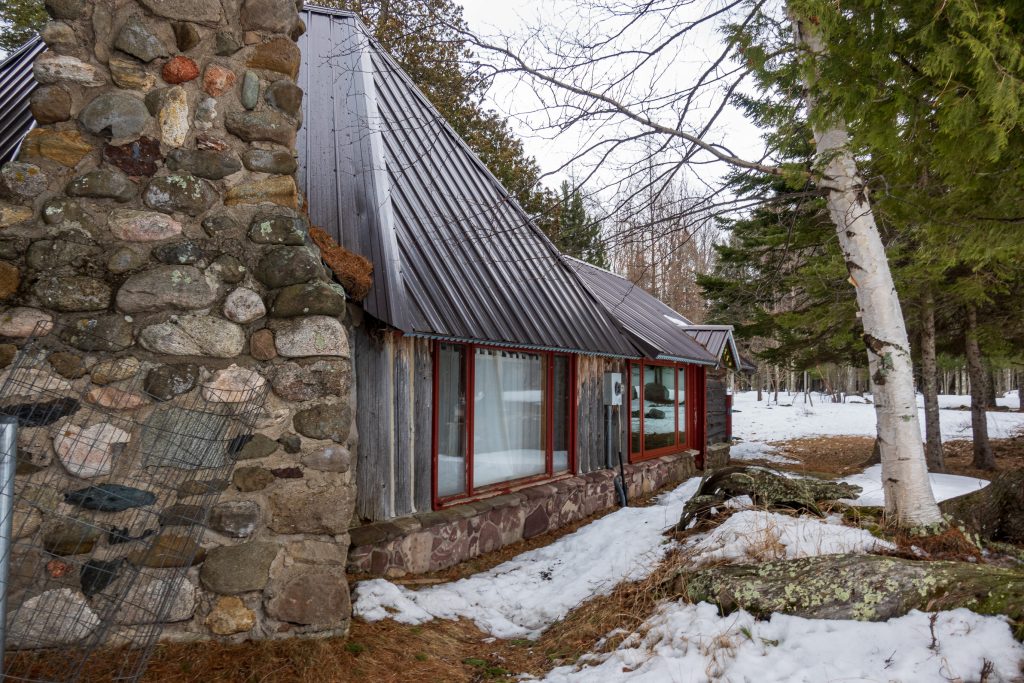
After a brief inspection of the buildings, we headed out onto the lake to look around. In early March, I would expect the ice to be about two to three feet thick. We weren’t going to fall through. We noted someone on a snowmobile tending his tip-ups for ice fishing. A tip-up is a device that lets you put a line into a hole in the ice and raises a flag when a fish takes the bait. No sitting over a hole, just be warm and use your binoculars or a quick snowmobile ride to see if you’ve had a strike. Here is a panorama looking southwest from Camp. Click on the picture for a full-sized version.

Jane Moore Drury, 1928-2020
My Mother passed away on February 29th, 2020. She lived a long, full life. We will all miss her.

What follows is her obituary, published in The Mining Journal and on the Fassbender, Swanson, Hanson funeral home website.
Jane Moore Drury, age 91, of Marquette and Big Bay, died peacefully on Saturday, February 29, 2020, at UP Health System – Marquette, in the loving care of her family
Jane was the only child of Edward Kenneth Moore and Helen Norris Moore. Born December 15, 1928 in Cincinnati, Ohio, she also spent part of her childhood in St. Louis, Missouri. She attended Mt. Healthy High School in Cincinnati and subsequently earned a bachelor’s degree in English at Ohio State University.
When settled in Washington, D.C., Jane was introduced by a mutual friend to her second husband, Alfred Charles Drury. Jane had always welcomed the idea of a large family, and with her three children, joined Al and his five children. Alfred and Jane had one son together, bringing their total to nine children. In addition, Alfred’s step-sons, Jon and Arthur Casanova, were also included in this new family union. All her nieces and nephews, grand- and great-grandchildren as well as children-in-law have benefitted from her mothering.
Jane and Alfred left Washington and relocated their family in Okinawa in 1970 when Alfred was stationed at the US Embassy in Saigon, Vietnam. They returned to the US in 1972 and acquired Alfred’s childhood home at 414 East Hewitt Avenue in Marquette. For over forty years they split their time between Marquette and their camp on Conway Lake near Big Bay, interspersed with extensive travel in the US, Mexico, and Britain. They commissioned two sailing yachts and cruised the inland waterway of the eastern US, the Florida Keys, and the Bahamas.
After Alfred’s death in 2013, Jane moved to the Mill Creek Senior Living Community where she lived very happily in an independent living duplex with her beloved cat, Sam. She entered the assisted living section of Mill Creek in January 2020, agreeing that it was needed and easier, but noting that it was the first time since 1950 that she did not have her own kitchen.
Jane will indeed be remembered for the hospitality of her kitchen. There was always room for one more person and there were always cookies of great craft and variety in the cookie jar. Jane loved experimenting in the kitchen and was an excellent baker and cook. Her meals brought family and friends together for many pleasant moments.
Jane was a steadfast and loyal friend who kept up with those she loved for decades. She cared deeply for her community, volunteering to read to children in the Powell Township School in Big Bay and as a member of the Community Presbyterian Church of Big Bay. She delighted in her work at the Peter White Public Library and sharing her latest discovery from Snowbound Books. Her kindness and gentleness, as well as her sharp intellect, insight, and good judgment, will be missed by one and all.
Jane is survived by her children Arthur Casanova, Kit (Chester) Schlei Buczynski, Stephanie Hazel Drury McPherson, William (Catherine) Kenneth Schlei, Hazel Letitia Drury Flaska, Andrew (Danielle) Moore Schlei, Abigail Faith Drury, and Alfred (Melanie) Cooper Drury, 18 grandchildren, and 18 great-grandchildren. She was pre-deceased by her husbands Alfred Charles Drury and Norbert Anthony Schlei, and her children Jeanne Drury Tape, Jon Casanova, and Letitia Ann Drury.
Thanksgiving Storm, Marquette, Michigan, 2019
For Thanksgiving last year, we traveled to Marquette, Michigan to see my Mother and family friends. From Tuesday though Thanksgiving in the last week of November, a good-sized November storm came through. I had a chance to take some pictures, and that is the subject of this post.
On the Tuesday before Thanksgiving, as the storm was gathering, I bundled up and headed out toward Presque Isle, a wonderful part at the northwest end of Marquette. Just outside the entrance to the park, I stopped by the Lake Superior & Ishpeming Railroad (LS&I) ore dock, the remaining operational ore loading facility in Marquette. As I arrived, I spotted a ship heading out on to Lake Superior beneath an ominous sky.
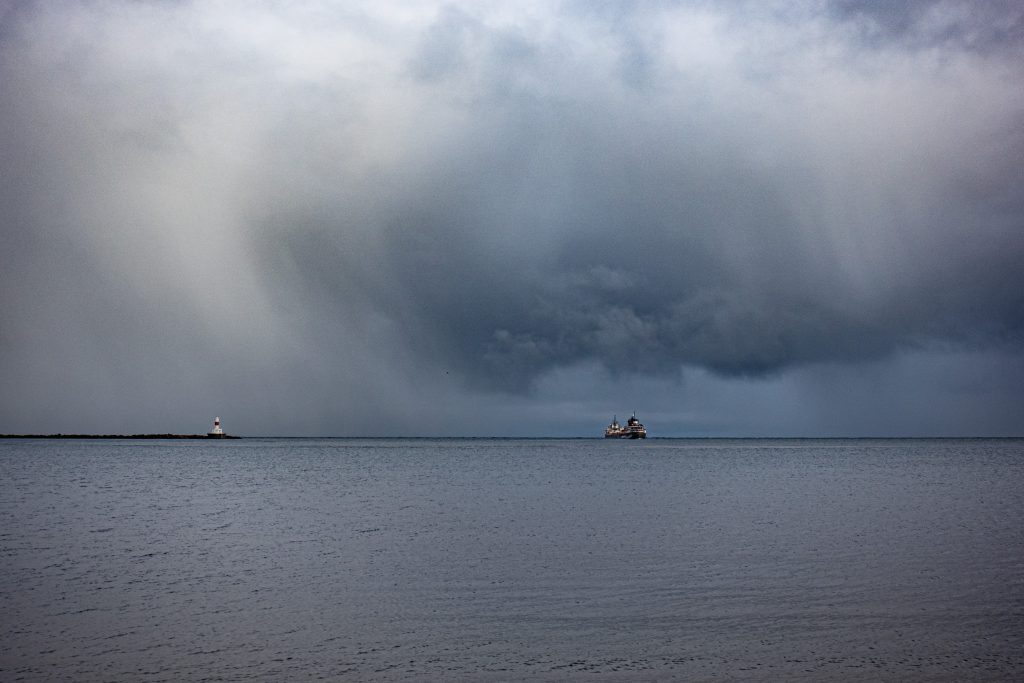
The ore dock, built in 1912, is 1,250 feet long, 60 feet wide, and the top is 75 feet above the water. It has 200 pockets for ore pellets, 100 on each side each with a capacity of 250 tons. Believe it or not, it sits on 10,000 wooden pilings. The ore boat Saginaw was tied up at the dock and loading ore.
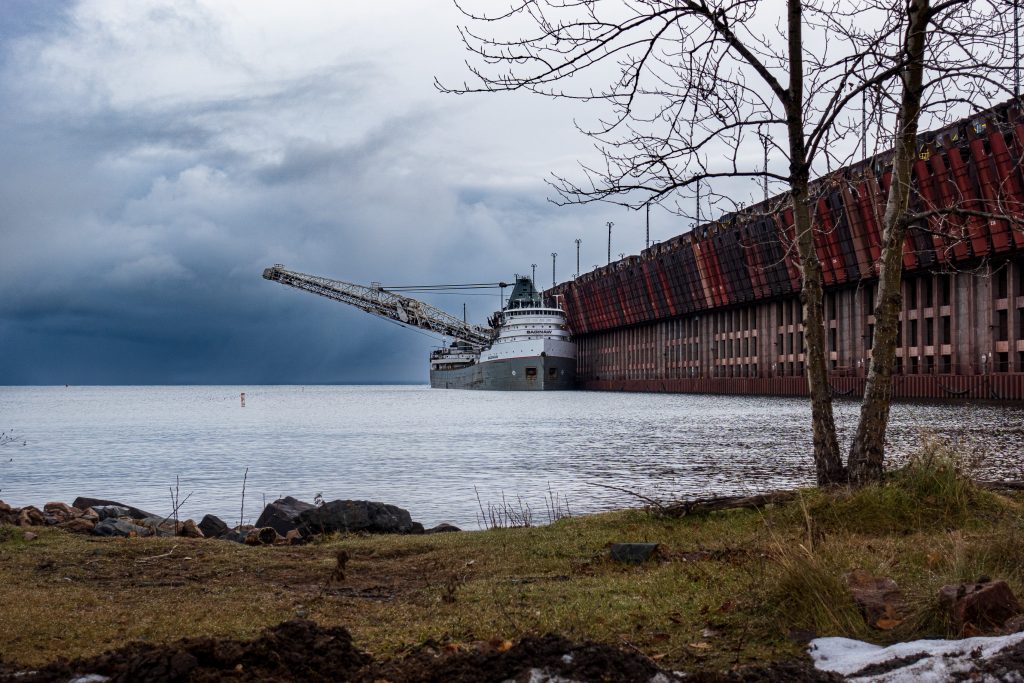
The LS&I have a retired locomotive parked by the dock. It is impressive.
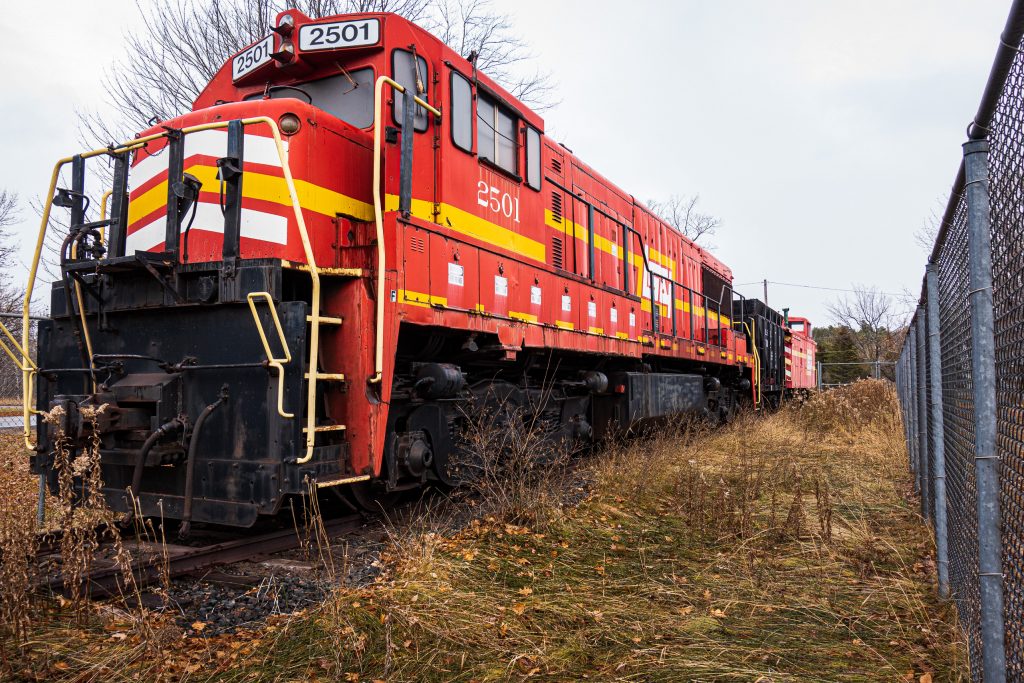
From there I went into the park and stopped to check out the break wall. Note the gate closing it off. It is a nice walk in the summer, but one needs to stay off in the fall and winter. In spite of the ominous skies, the lake was relatively calm.
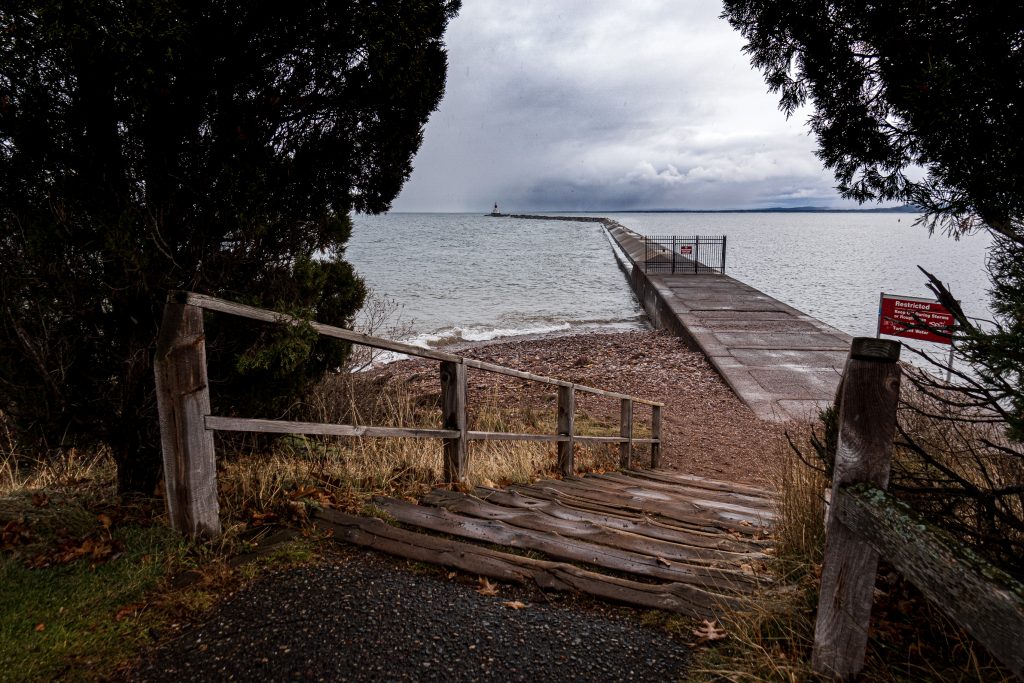
Losing a Nice Tree
Back in November, I noted that some branches on a nice, big pine tree by our house in Lake Riverside were looking a little yellowish. My worst fears were realized when we got out to the house after Christmas and these branches were clearly dead. You can see the dead needles on the right side of the right hand tree.
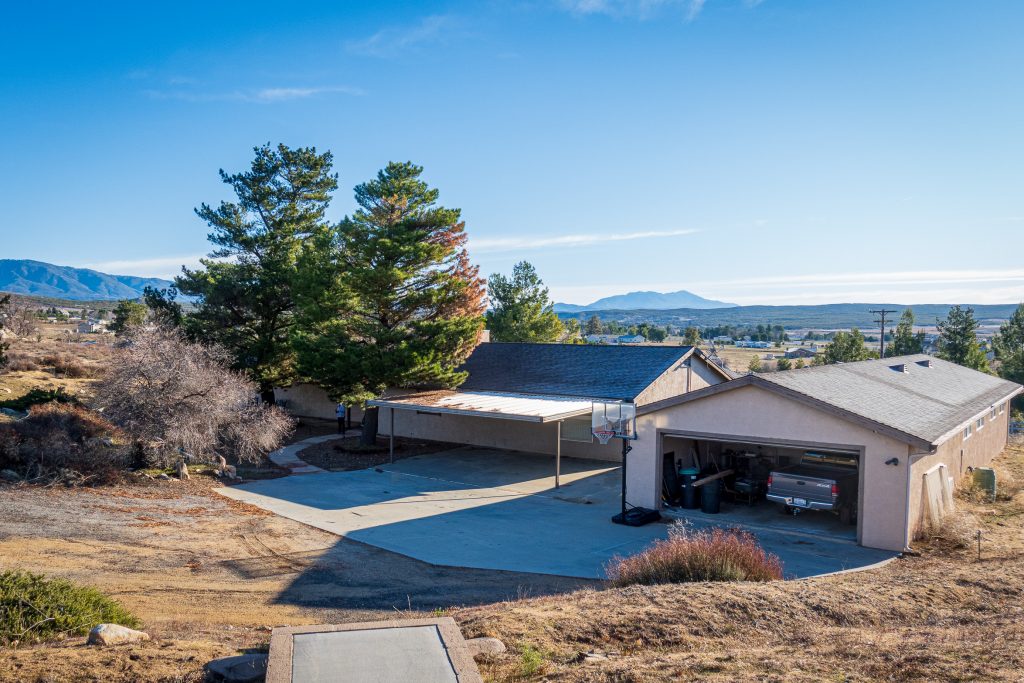
With the tree right next to the house and partially over the roof, I knew that I needed professional help. I had some hope that the tree might be saved, and if that wasn’t possible, I needed a tree service to take it down safely. Consulting with our local Facebook group led me to Cherry Tree Service. Chris and Roger came out and sadly confirmed my fears that the tree needed to come down.
We scheduled the work for January 1st (they are dedicated) and they showed up in the morning with their equipment. They set up quickly and got to work. Here is a time-lapse video of the tree removal.
Reduced to branches and small chunks, the tree was removed. Looking at part of the trunk, you could see how fast the tree grew when it was young and how that growth slowed as the tree became larger.
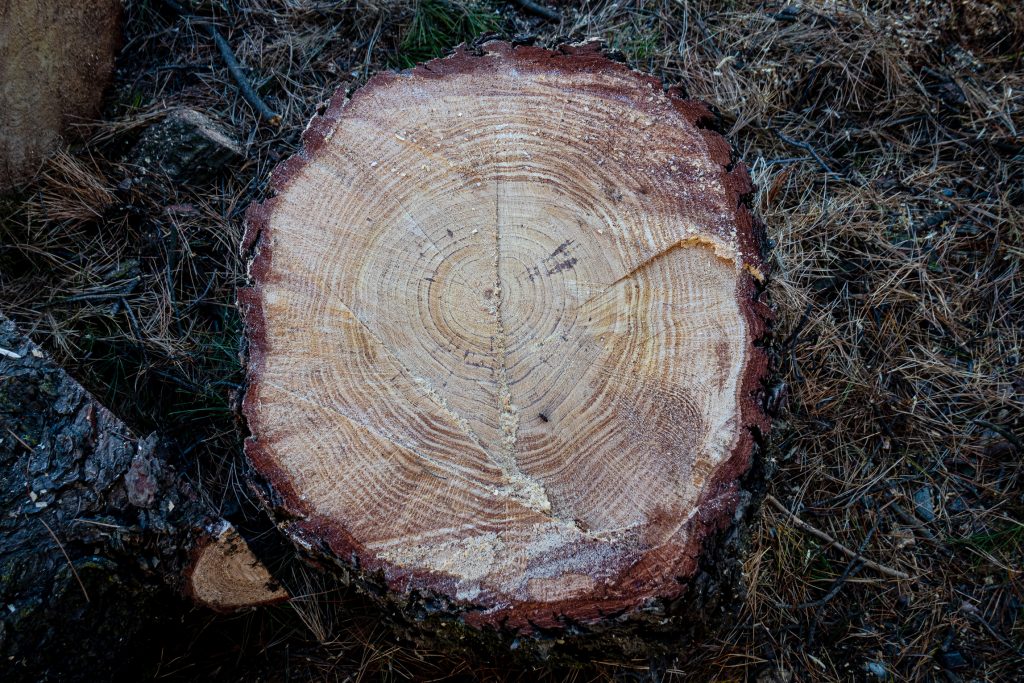
Within about an hour, the tree was nothing but a stump.
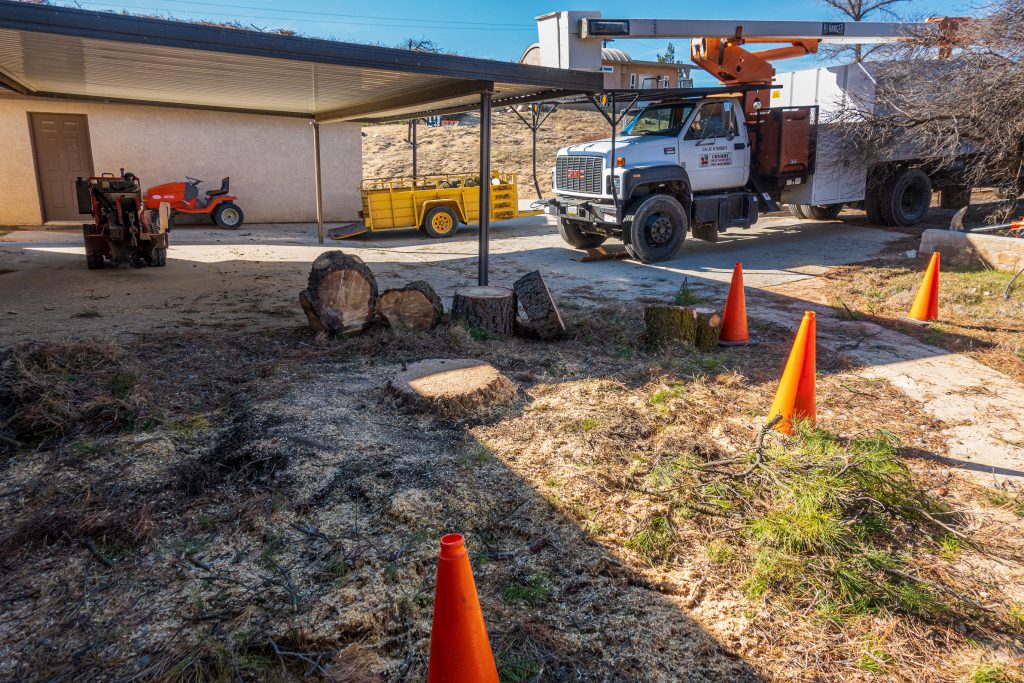
Chris has a remarkable stump removing machine that quickly ground the stump into mulch.
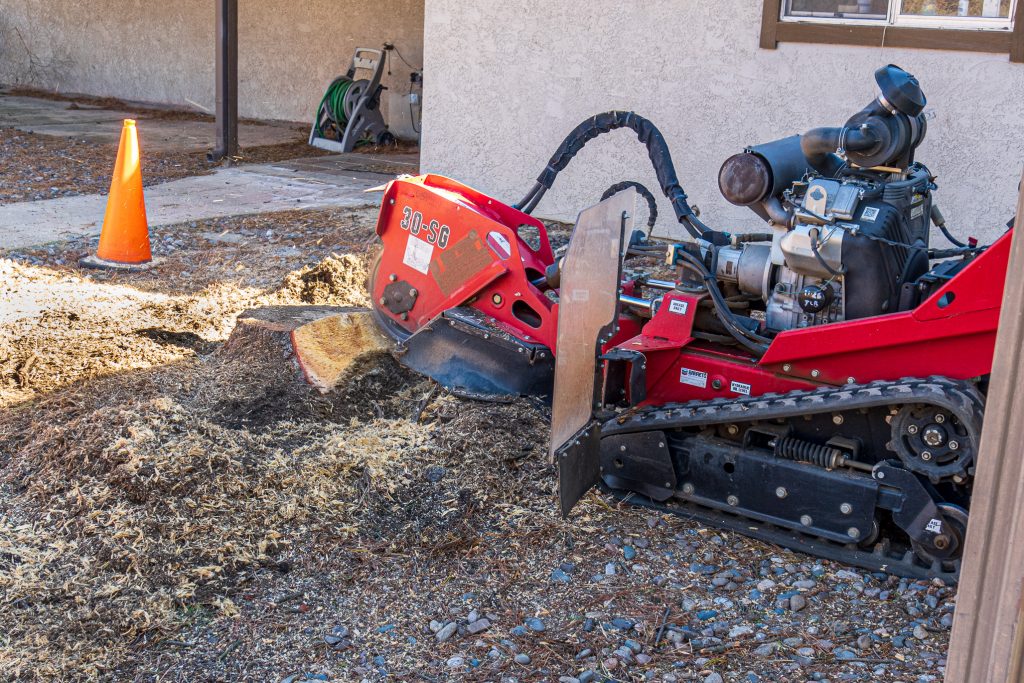
After a couple of hours of work, all that was left was a mound of mulch and dirt.

It was almost as if the tree had never been there. We will miss its shade and the character it provided to the property.

Anjaneri Fort, Nashik, Maharashtra — October 2019
Following up on my earlier post on Nashik, we headed out on Saturday morning to visit Anjaneri Fort, a historic and religious place on the road to Trimbakeshwar. Anjaneri Fort is said to be the birthplace of the Hindu god Hanuman. Hanuman is a major figure in the Hindu epic Ramayana. Anjaneri was Hanuman’s mother and gives her name to his birthplace.
It was about a 45-minute drive from our hotel to the turn off the main road. We headed up sharply, through a small village, and into the area managed by the Forest Department. There was a small entry fee. We arrived at the parking lot below the impressive cliffs of the Trimbakeshwar Range. This is the view from the parking lot.
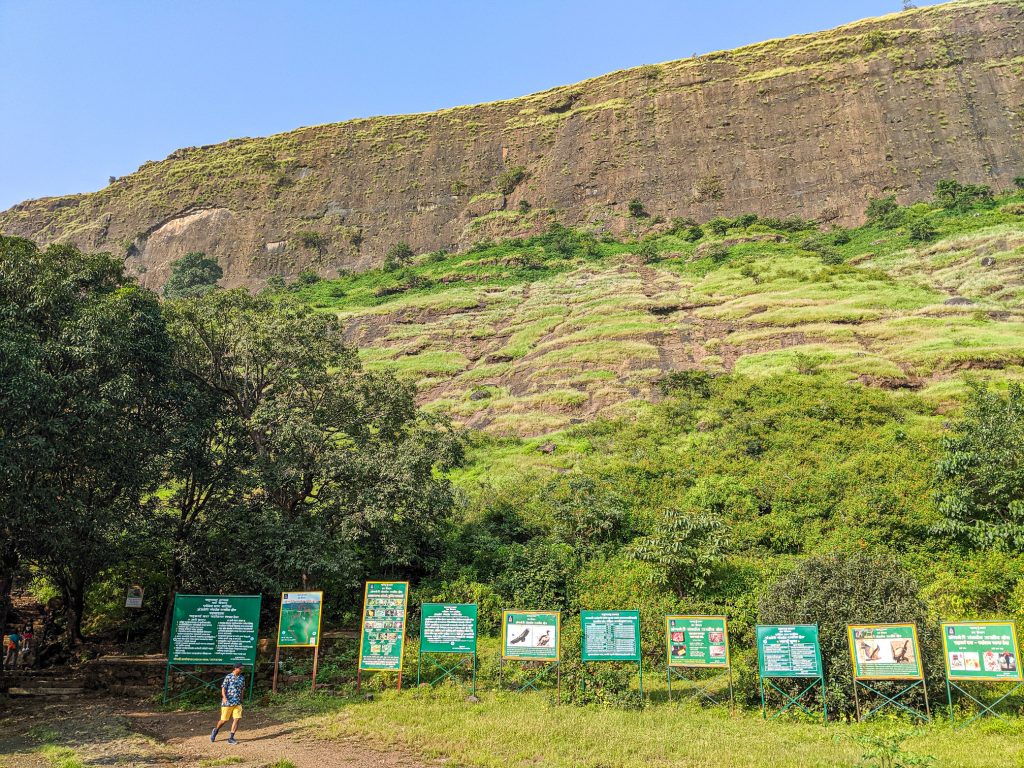
At this point we confirmed what I had read on-line: Cameras are not allowed. My new Sony RX-100 M5 had to stay in the car. All the pictures in this post were taken with my Google Pixel 2, most using Adobe Lightroom Mobile.
It was somewhat warm and humid as we made our way up the stairs clinging to the side of the steep cliff of the ghat. I’d brought Gatorade this time to be sure I didn’t overheat like I did a week earlier in Thane. The stairs are in decent shape and you ascend quickly, passing others who are coming down.
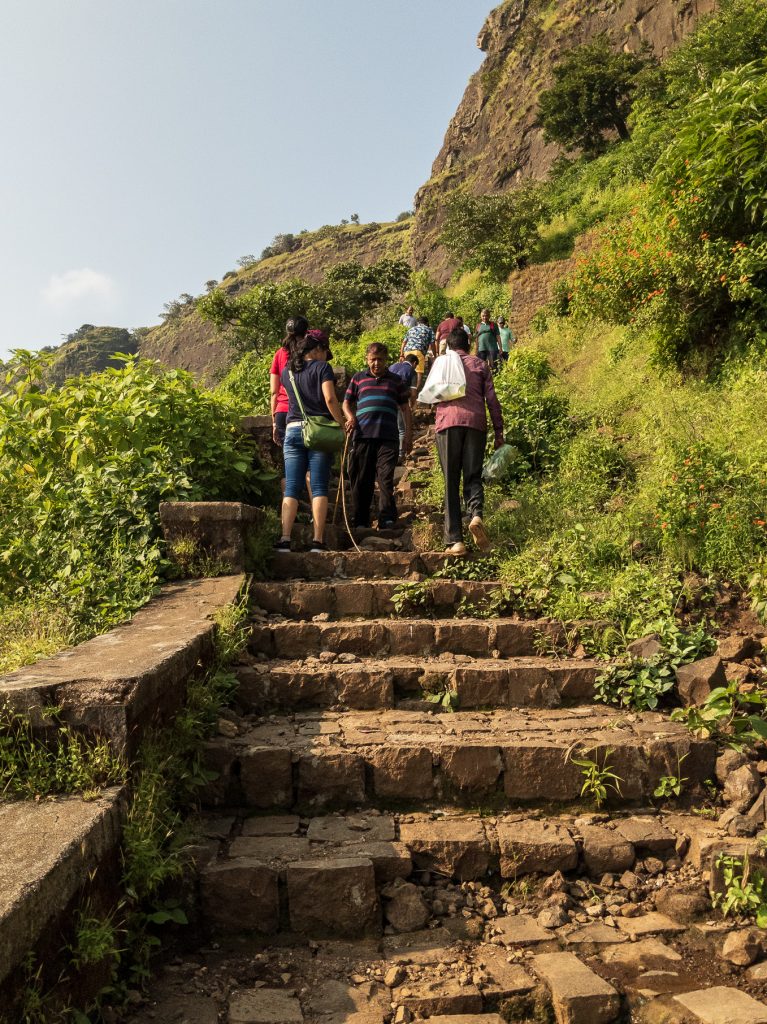
Having driven up a fair amount to reach the parking lot, the view of the countryside is quite impressive. This year had a very generous and long-lasting monsoon and the countryside was brilliantly green. This is a view of Anjaneri Lake from the path.
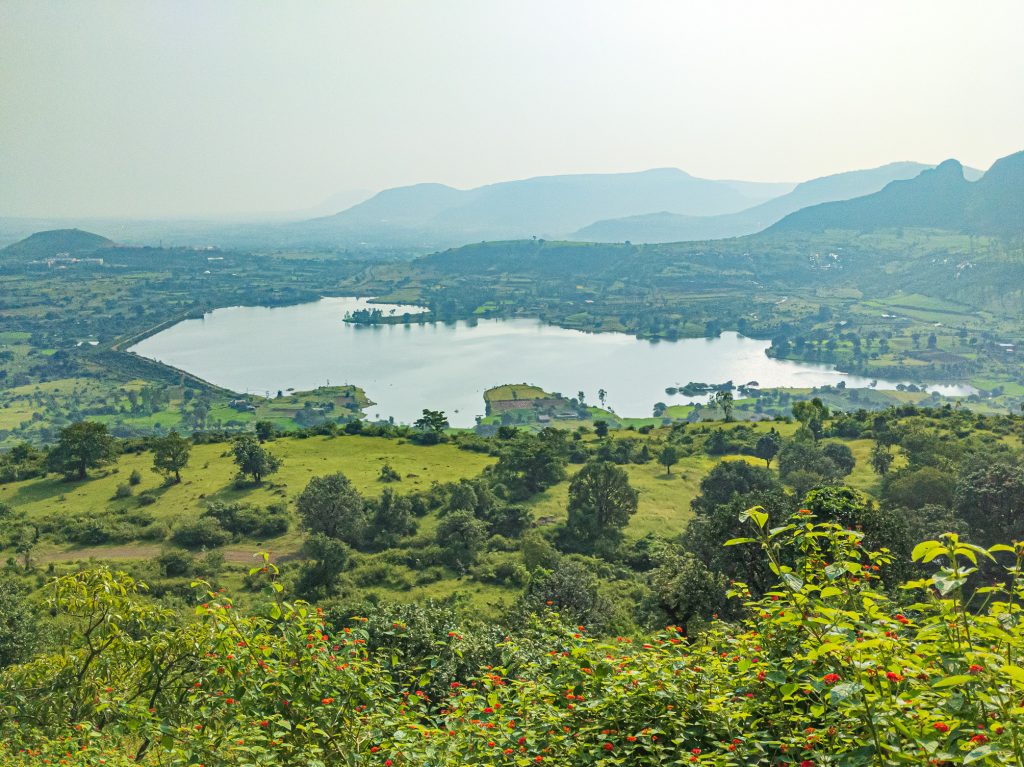
For those reading from the homepage, the story continues below. Please read on.
Continue readingThane & Nashik, Maharashtra — October 2019
Back in October, on my first morning in India, we had plans to go to Yeoor Hills, on the north east side of Mumbai near Thane for some sightseeing. Always wanting to win the fight against jet lag quickly, I was up early Sunday after arriving after midnight the night before. I was greeted by a hazy but pretty sunrise outside the window of my hotel.
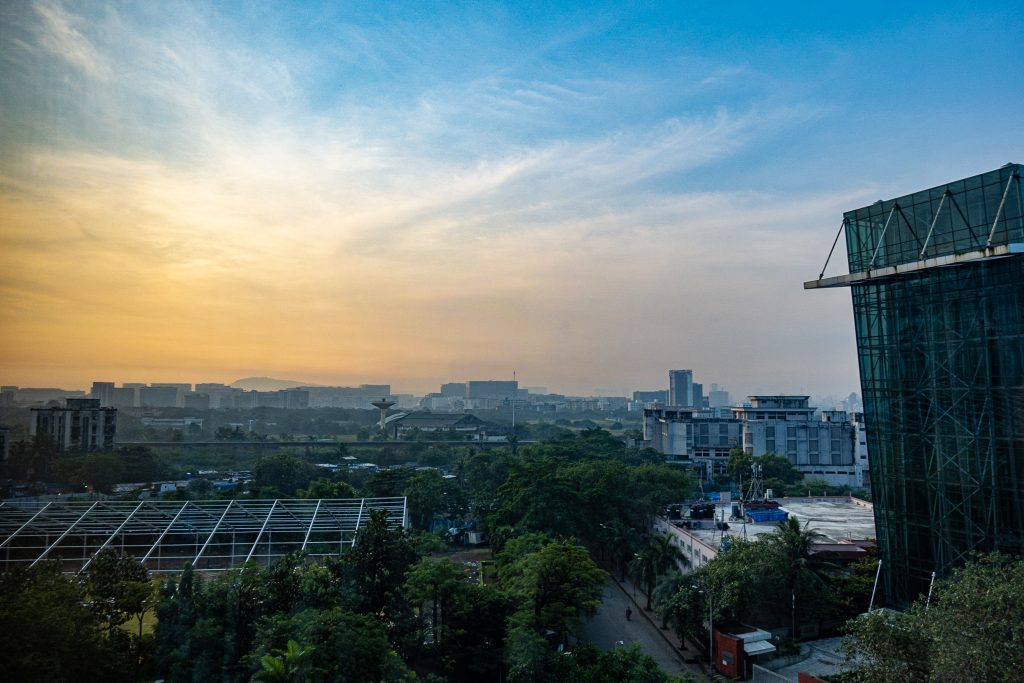
I was up early and in the car heading for Thane at 8am. Our first stop was the Golden Swan Country Club in Yeoor Hills. This 9-hole course is nestled in the hills on the east side of Sanjay Gandhi National Park in the northern part of Mumbai. We hit a few golf balls as the rest of our little Sunday outing group arrived.
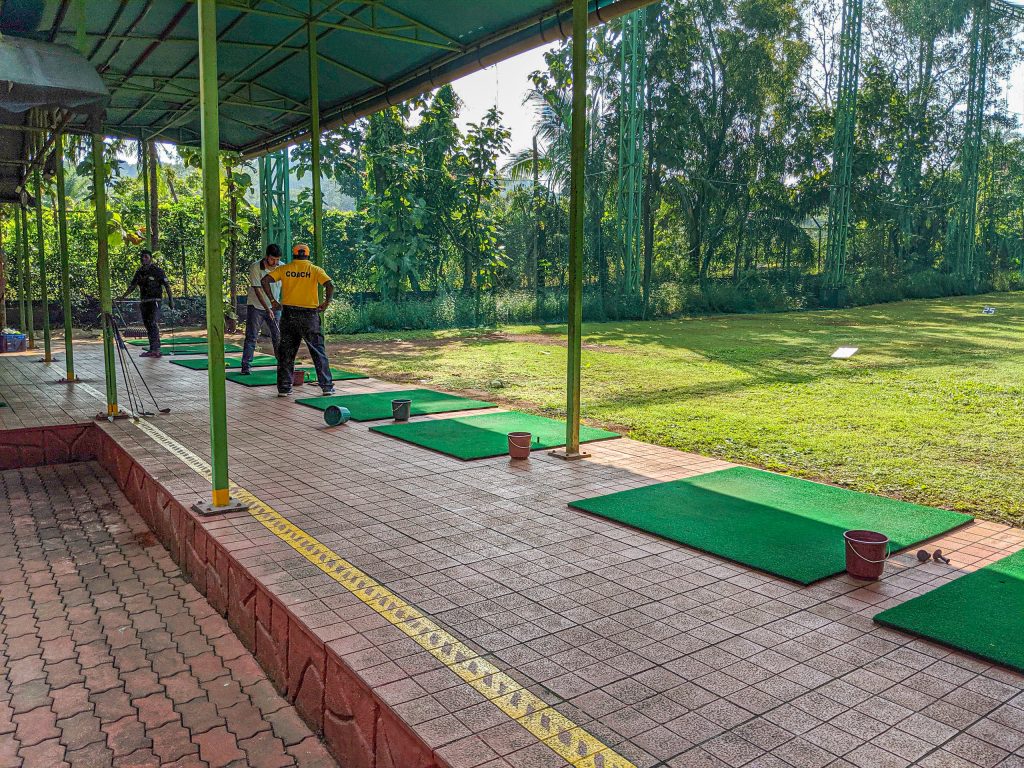
Our next stop was the Mandapa Forest Bird Watching zone. We were there for a short trek, not for bird watching. After driving down from Yeoor Hills, we went north a couple of kilometers before turning back up towards the hills. We went from busy offices to residential to the end of the road against the wooded area at the foot of the hills west of Thane. There was an entrance fee for non-residents (they will check the prefix on your license plate or ask for identification) but it is well worth the cost. You go from the city to the jungle in a very short distance. Views of the city below are remarkable.
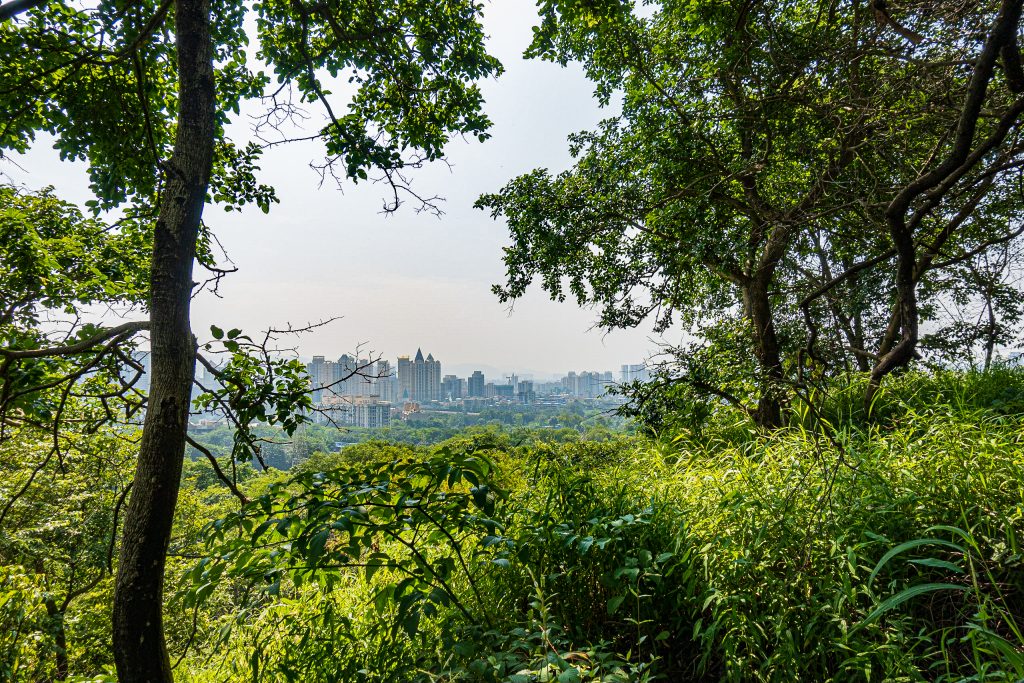
The story continues below the fold. At the end of the week we visited Nashik, a city 100 miles (160 kilometers) northeast of Mumbai. Here is a teaser photo to encourage you to click on “continue reading” to see the rest of the post.
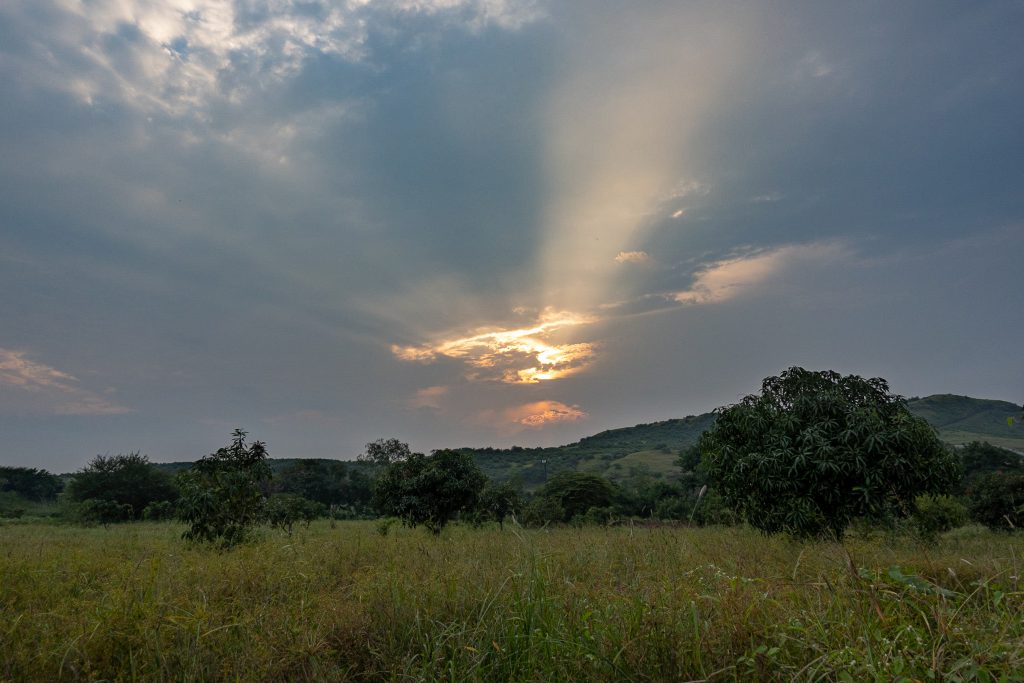
Observatory Operational — NGC 7331
After more years than I care to admit, the observatory is operational again. With support from a fellow enthusiast, I spent the time over Labor Day weekend to sort out all of my PC driver issues and get the computer speaking to the mount, telescope, focuser, rotator, and camera. Gathering data on the long weekend and mid-month, I was able to get this image of NGC 7331.

NGC 7331 is 40 million light years from Earth. The smaller galaxies in the lower part of the image are approximately 10 times farther away and so this is not a gravitationally bound group. The common name for this group is the Deer Lick Group. I imaged this galaxy group on my Celestron C-11 in 2011, with my Televue NP-101 in a wide view in 2009, and it was one of my early targets with the C-11 in 2006. The 2006 image was taken from West Los Angeles. All of the others were taken from my observatory in Lake Riverside. (Please note that the company and product names are separate links so you can find out both about their current products as well as my older ones.)
This image (that’s a link to my gallery) consists of 230 minutes of total exposure time: 110 minutes of luminance (all colors) and 40 minutes each of red, green, and blue. All of the data was collected in 5 minute exposures and combined using the LRGB method to create this final image. If you are interested, I wrote a post in 2017 that describes how these exposures are cleaned up and turned into a final image.
The data was captured on an SBIG ST-10, my workhorse CCD camera for almost 15 years. The telescope is a Planewave CDK 12.5 reflector. It is mounted on an Astro-Physics AP-1200 mount. The data were captured using Maxim DL, orchestrated by CCD Commander. My observatory software is The Sky X. For focusing, I use FocusMax.
The journey to this image was not smooth. We had three nights of imaging time over the Labor Day weekend. I used the first to get everything connected and calibrated. On the second, I captured data. My general order of imaging on a rising object (NGC 7331 was rising in the east when I took the data) is red, green, blue, then luminance. I was surprised that the blue filter seemed to be producing the brightest images when that should be the luminance filter. I realized on the third imaging night that I had my filter order incorrect and that, in fact, what I had set up as the blue filter was actually the luminance filter. So that final night I took almost two hours of data through the “blue” filter.
After poking around on my old computer and with different software, I determined the correct filter order. But there was another problem. The color data were very poor, and my calibration frames (see the data reduction post) were very poor. I was able to get back out to the observatory later in September and take a new set of color data. That was married with the not blue but luminance data in PixInsight to create this final image.
I am very happy to have the observatory operating again. Without the moral support of the friend who helped me while he got his imaging working, I’d have put it off again. It’s great to have a real deep-space image back in the blog and the gallery.
Road Trip Summer 2019 — Part 2
We pick up our story as we arrive in beautiful Anacortes, Washington. 90 miles north of Seattle, Anacortes is the gateway to the San Juan Islands, a beautiful chain of islands connected by the excellent Washington State Ferry System. We were here for family reunion on my wife’s side. This post will cover very little from Anacortes, as that was all family activity, but much more on our drive south through the redwoods and down the California coast. But first, Anacortes.
If you visit Anacortes, you must visit Washington Park. Located at the far west end of the city, next to the ferry terminal, this large park has many hiking trails and accesses to the sound (I suppose it’s the sound and not the ocean, correct me if I am wrong). I went there with my daughters on a nice sunny day and came upon this small crab. He (it?) is in the lower left side of the picture. Remember that you can click on any picture to see a full-sized version.
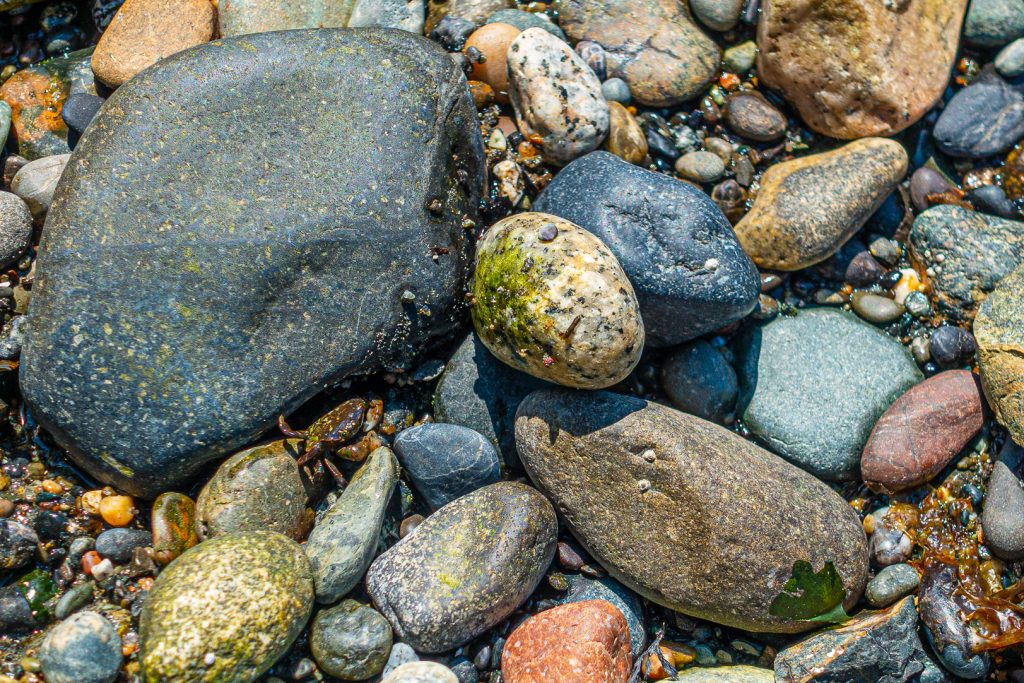
For those of you reading from the blog home page, from here I will drop to “read more.” Click through to see a kayak trip, The redwoods, Point Reyes, and Monterey. Here is a teaser picture. If you are reading from a direct link, like from Facebook, then you can disregard this message.
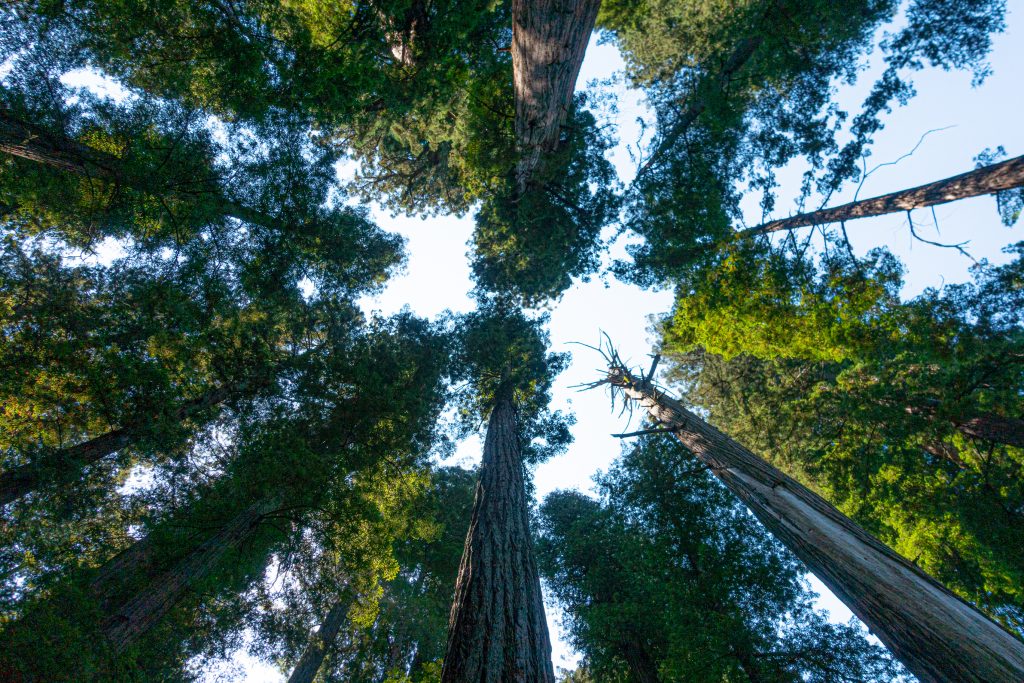

You must be logged in to post a comment.